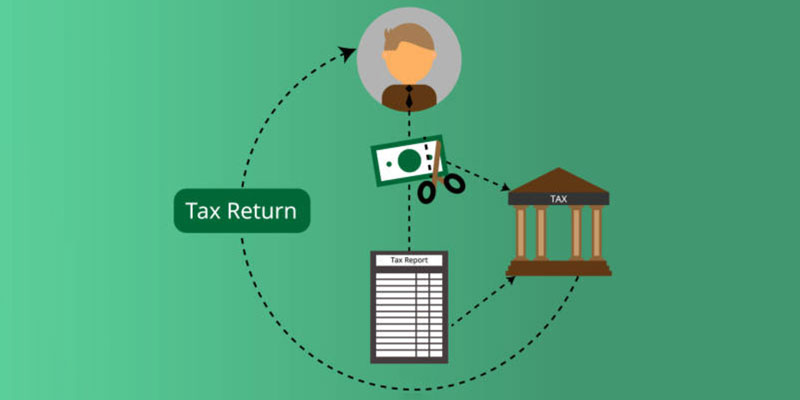Jun 16, 2023 By Susan Kelly

The prevalence of consumer debt has been an ongoing concern for many. According to the most recent data from the Federal Reserve, Americans owed nearly $1 trillion in credit card debt as of December 2019 - a 9% increase since 2018. With such staggering numbers, it's no wonder that so many are seeking answers on managing their finances more responsibly.
We dive deep into credit card debt statistics and discuss what they mean for today's consumer landscape. Exploring key findings in areas like age group differences, average balances, and payment delinquencies nationally and by the state will shed light on this all-important issue.
Credit Card Debt in the U.S.

The current state of consumer debt is concerning. According to the most recent data from the Federal Reserve, Americans had over $1 trillion in credit card debt as of December 2019 - an 8% increase since 2018.
This translates to an average American holding approximately $3,800 in credit card debt. Further analysis reveals that this amount varies significantly across different age groups and regions of the country.
Looking at average balance size by age group, Americans aged 25-34 have the highest levels at around $5,300 per person. In contrast, seniors aged 65+ carry less than half that amount at around $2,400 per person on average.
Moreover, when divided by region, the states of California and New York carry the highest levels of credit card debt at over $4,000 per person.
To the average balance size, payment delinquency rates are also an important indicator for understanding consumer indebtedness. The most recent data from the Federal Reserve shows that 8% of Americans are now more than 90 days late on their credit card payments - a 3% increase from 2018.
Further analysis reveals that this issue disproportionately affects younger age groups, with 23% of 25-34-year-olds reporting being delinquent in their payments compared to only 4% of those aged 65 or older.
Average Credit Card Balances by Age Group in America

When looking at average balance size by age group, we find that Americans aged 25-34 have the highest levels of credit card debt at around $5,300 per person. Those aged 35-44 hold an average balance of $4,700, and those 45-54 come in just below with an average balance of around $4,500.
Furthermore, those between the ages of 55-64 carry a slightly lower average credit card balance of approximately $3,800. Seniors aged 65+ carry the least amount on their credit cards, with an average of only $2,400 per person.
This clearly indicates a higher level of financial literacy amongst older generations as they tend to manage their finances more responsibly than younger generations.
Statistics on Credit Card Debt across Different Income Groups
When diving deeper into the economic profile of those carrying credit card debt, it becomes increasingly apparent that lower-income households are more heavily burdened. Analysis reveals that individuals earning less than $25,000 a year tend to carry an average balance of nearly $4,500 - significantly higher than their counterparts in higher income brackets who only carry an average balance of around $3,100.
Moreover, these lower-income individuals are more likely to be delinquent on their payments, with 14% being 90 days or later compared to 5% of those making over $50,000 annually. This data demonstrates how much harder it is for those living on a tighter budget to keep up with their credit card payments due to their limited resources and lack of financial literacy.
Who Has the Most Credit Card Debt and Why
When divided by region, the states of California and New York carry the highest levels of credit card debt. Both states have an average of over $4,000 per person. This is likely due to a combination of factors, including higher cost of living, more expensive housing markets, and a greater prevalence of credit card usage.
Compared to other areas of the country, such as the Midwest and South, where there are fewer larger cities and less access to higher-paying jobs – it's easy to see why these regions carry lower levels of credit card debt overall.
Consumer indebtedness continues to be a major problem in America today. Despite the ever-increasing amounts owed on credit cards each year, there are measures that can be taken to mitigate the issue, such as budgeting responsibly and taking advantage of financial literacy programs offered by organizations like the
Financial Planning Association. By exploring credit card debt statistics in more detail, we can better understand how to move forward with this important issue.
Strategies to Manage Your Credit Card Debt and Improve Your Financial Health
- Track Your Spending: One of the best things you can do to manage your credit card debt is to track where and how you spend your money. By doing so, you'll be able to identify areas where you're overspending and adjust accordingly.
- Make a Budget: Creating a budget that outlines your monthly income and expenses can help you stay on top of your finances and ensure that all of your bills are paid on time.
- Pay More Than the Minimum Payment: Most credit cards come with minimum payments - but if possible, it's best to pay more than the minimum as this will help reduce your overall balance faster.
- Take Advantage of Balance Transfer Offers: Many credit card companies offer balance transfers, allowing you to move your debt from one card to another at a lower interest rate. This can help you save money in the long run as it reduces the amount of interest accumulating over time.
- Utilize Financial Literacy Programs: Many organizations offer free financial literacy programs and workshops - take advantage of these resources to learn more about managing your finances responsibly.
These strategies can help you manage your credit card debt and improve your financial health. As always, it's important to remember that reducing debt is an ongoing process that takes dedication and patience - but with the right tools and knowledge, you'll be well on your way towards becoming debt-free.
FAQS
Is credit card debt the highest in 20 years?
Yes, credit card debt is at its highest level in 20 years. According to the Federal Reserve, American consumers had $875 billion in credit card debt as of December 2019 - an increase of 6% from the year prior and the most since 2008.
Which country has the highest credit card debt?
The United States has the highest levels of credit card debt in the world, with an estimated $875 billion owed as of December 2019. Other countries with high levels of consumer debt include Canada ($53.3 billion), the United Kingdom ($58.8 billion), and France ($18 billion).
Which is the most debt-free country world?
The most debt-free country in the world is Qatar. In 2019, they had a per capital debt of just $873 - significantly lower than other countries, such as the United States ($4,751) and Japan ($14,664).
Conclusion
Credit card debt highlights the need for responsible borrowing choices. While you may have access to resources like 0% APR cards and balance transfers, it's important to remember that if you put yourself in a position of overspending, you could be looking at steep financial burdens in the future.
It's possible to navigate through credit card debt strategically and responsibly, but it's vital to be aware of the long-term impacts of your actions before you sign up for a card. It's important to decide what type of card best fits your needs and ability to make monthly payments.
-

How to Generate Passive Income with No Initial Funds
Jun 11, 2023
-

What Is Business Payroll Service and How to Find Good Payroll Service
Dec 12, 2021
-

What Is Short Interest?
Aug 15, 2022
-

How Direct IRA Transfers Work: A Comprehensive Guide
Jun 29, 2023
-

What Makes a Good Realtor
Jul 04, 2023
-

Pros and Cons of Reverse Mortgage
Jul 01, 2023
-

How to Apply for a Home Loan
Jun 14, 2023
-

How to Make Money on Fiverr
Jun 12, 2023



